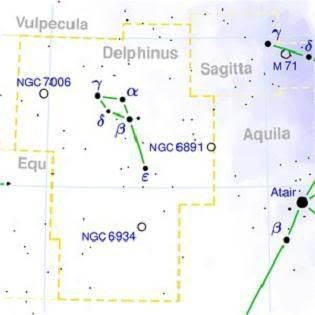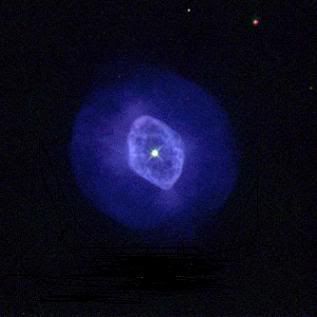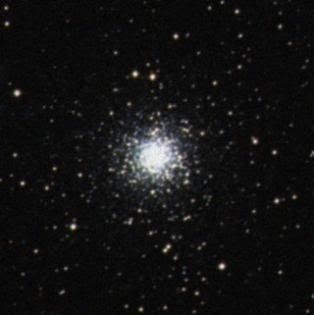Post by glactus on Feb 17, 2008 8:42:24 GMT

Delphinus, (The Dolphin), is an ancient constellation located just west of Pegasus. This small group of faint stars looks like a kite. Its alpha star is named Sualocin and its beta star is known has Rotanev. These are not, as one might expect, names dating from Antiquity, but instead are quite new.
The constellation lies along the southern border of the milky way (north of, but close to the celestial equator.) It is neither large nor bright, but it is a distinctive constellation and once you find it, you will always remember it. It doesn't take much imagination to see a tiny dolphin in this figure. The diamond represents the body and a line to the fifth star forms the tail.
Delphinus is visible worldwide except for the Antarctic.
Notable attractions are:

NGC 6891
NGC 6891 lies at an estimated distance of 7,200 light years. The nebula is pretty small, but has a high surface brightness. This means that at magnitude 10.7 it can be seen in telescopes as small as 4.5-inch aperture.

NGC 6934
NGC 6934 is the brighter and larger of the two prominent globular clusters in Delphinus. Like most of this tiny constellation, it lies it a rich star field. It is a small and tightly packed globular about 50,000 light years from Earth. Magnitude 9.75

NGC 7006
NGC 7006 is one of two prominent globular clusters in Delphinus. It is small and compact and may be mistaken for a faint star in small instruments at low magnification. One of the many distinguishing characteristics of this globular is that it lies much farther away than most (175,000 light years) nearly 4 times farther away than M15, and ten times farther away than Omega Centuari.

Cat's eye nebula
credits:
Map and text:
en.wikipedia.org/wiki/Delphinus
image: NGC 6891:
www.tabbykat.com/HSTimages.htm
image: nGC 6934
www.seds.org/~spider/ngc/ngc.cgi?NGC+6934
image: NGC 7006
www.skyhound.com/sh/archive/aug1/NGC_7006.html


